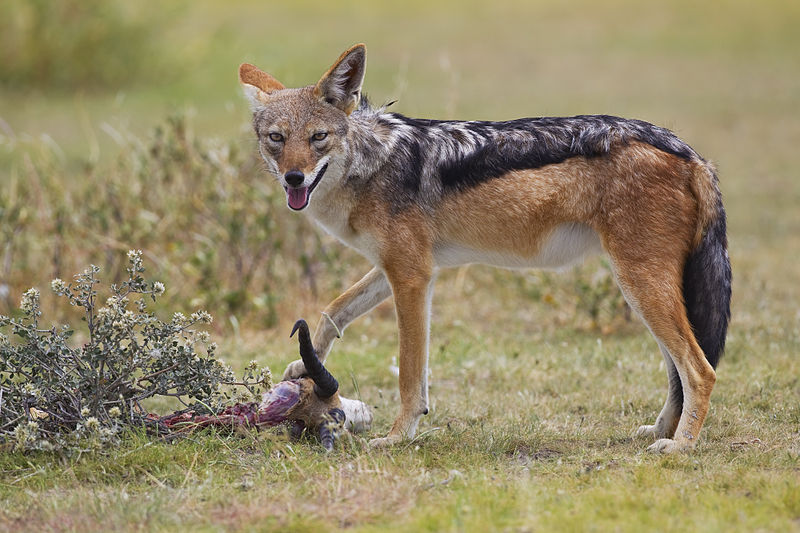Fooling Nature: The Jackal
Older pups often help raise and care for younger siblings.
Photo: Thomson Safaris guests Terry O’Neill & Linda McCormick
In folk tales, they’re depicted as cunning, intelligent pranksters (and on the walls of ancient Egyptian tombs and temples, even as gods); jackals have always been known for their ability to adapt themselves to any environment. Even today, as so many wildlife populations suffer from the effects of increased human presence and habitat destruction, jackals continue to thrive.
Part of that success can be attributed to their strong familial bonds. One of the few mammalian species that mate for life, jackals often hunt in pairs, using their speed and dexterity to “tag-team” prey. Parents are able to go off to hunt thanks to help from the kids; older pups often care for their younger offspring (in families where this occurs, significantly more pups survive to adulthood). Of course like all families, just because they pitch in doesn’t mean young jackals always get along; there’s pretty serious sibling rivalry from a young age among black-backed jackals (a prevalent species in Tanzania), and dominance hierarchies are established early, and relatively rigid.
Another reason for their success is their relative intelligence. Closely related to dogs and wolves, black-backed jackals communicate effectively, especially among family members (black-backed jackals will answer their family member’s cries and ignore those of strangers). Different cries convey different information; a fox-like cackle indicates they’re trapped, a woof means they’ve been surprised, and a yell tells family members a predator is near.
But perhaps the single greatest factor in the jackal’s success is simple: it’s just not that picky.
Omnivores, they eat everything from termites, spiders, and scorpions; to rodents and hares; to antelope ranging in size from tiny dik-dik to full-grown impala (though jackals will generally only pursue an injured or otherwise weakened animal of that size). Jackals that live near the coast even eat beached marine mammals, mussels, and fish.
 Jackals will eat almost anything, a trait that comes in very handy in the wild.
Jackals will eat almost anything, a trait that comes in very handy in the wild.
“2012-bb-jackal-1” by Yathin S Krishnappa – Own work. Licensed under CC BY-SA 3.0 via Wikimedia Commons – https://commons.wikimedia.org/wiki/File:2012-bb-jackal-1.jpg#mediaviewer/File:2012-bb-jackal-1.jpg
Of course there are still threats to jackals; in the wild, leopards are a regular antagonist, and for years, farmers have killed animals that harry their livestock, or simply those whose pelts look especially lush (though jackals have been known to even outwit human hunters; when poisoning became popular, they learned to regurgitate the poisoned bait). But through it all, the jackal has continually learned new ways to adapt.
Perhaps that’s the greatest trick it knows how to play!

